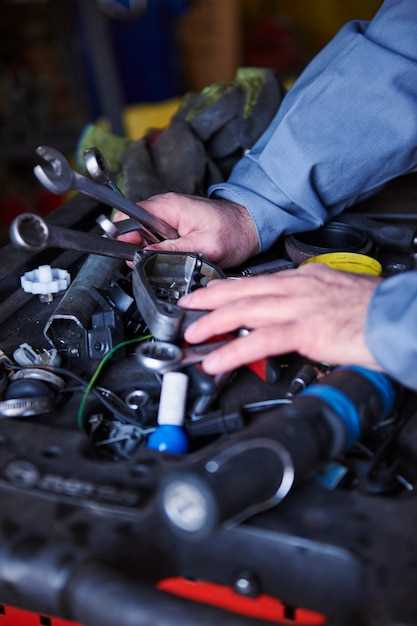
The check engine light is one of the most recognized indicators on a vehicle’s dashboard. When it illuminates, it signals that something within the engine system requires attention. Understanding this light, its implications, and the appropriate responses can save car owners time, money, and stress in the long run.
Modern vehicles are equipped with complex systems that monitor various engine parameters. When the check engine light activates, it can mean a range of issues, from minor concerns like a loose gas cap to more critical problems such as engine misfires or catalytic converter failures. Recognizing the severity of the situation is essential for ensuring the longevity and health of the vehicle.
In this article, we will delve into the reasons behind the check engine light, how to interpret its signals, and the necessary steps to take when it appears. By educating yourself on these aspects, you can better navigate the complexities of automotive care and maintain optimal performance of your vehicle’s engine.
Common Reasons for Check Engine Light Activation
The check engine light is an essential alert system located on your vehicle’s dashboard. Its activation can indicate various issues that require attention to ensure the engine operates efficiently. Understanding the common reasons for this light can help you respond appropriately and maintain your vehicle’s performance.
One frequent cause for the check engine light is a loose or damaged gas cap. This simple issue can lead to fuel vapors escaping, causing increased emissions and reduced fuel efficiency. Tightening or replacing the gas cap often resolves the problem.
Another common reason is a faulty oxygen sensor. This component monitors the level of unburned oxygen in the exhaust system, providing data to the engine control unit. A malfunctioning sensor can lead to poor fuel economy and increased emissions, requiring immediate attention.
Additionally, an issue with the mass airflow sensor can trigger the check engine light. This sensor measures the amount of air entering the engine to help calculate the correct fuel-to-air ratio. If faulty, it can disrupt engine performance, affecting acceleration and fuel efficiency.
Problems with the catalytic converter are also significant. This component helps reduce harmful emissions, and if it fails, you may notice reduced engine power and increased exhaust gases. A malfunctioning catalytic converter often results in higher repair costs, making early detection vital.
Lastly, ignition system failures, such as worn spark plugs or ignition coils, can activate the check engine light. These components are crucial for proper engine combustion, and their deterioration can lead to misfires, reduced performance, and increased emissions.
By recognizing these common issues, drivers can take timely action to address the check engine light, ensuring better vehicle functionality and longevity.
Step-by-Step Guide to Diagnosing Check Engine Issues

When the check engine light illuminates on your dashboard, it’s essential to take immediate action. This guide will help you systematically diagnose the issue behind the light.
- Observe the Check Engine Light:
- Note if the light is solid or blinking. A blinking light typically indicates a serious problem that requires immediate attention.
- Pay attention to when the light comes on. Does it happen during acceleration, idling, or after starting the vehicle?
- Check for Other Dashboard Warnings:
- Look for any additional lights on the dashboard that could indicate further problems.
- Identify if the check engine light correlates with other issues, such as low oil pressure or battery warnings.
- Inspect Basic Issues:
- Open the hood and check the engine’s oil level.
- Examine the coolant level in the reservoir.
- Look for any loose or damaged hoses and electrical connections.
- Connect an OBD-II Scanner:
- Purchase or borrow an OBD-II scanner to read diagnostic trouble codes (DTC).
- Plug the scanner into the vehicle’s OBD-II port, typically located under the dashboard on the driver’s side.
- Record any trouble codes that appear on the scanner. Consult the scanner manual or online resources for code definitions.
- Research Fault Codes:
- Look up the trouble codes to understand the nature of the problem.
- Identify common fixes or solutions related to the codes retrieved.
- Perform Visual Checks:
- Inspect the gas cap for tightness. A loose cap can trigger the check engine light.
- Check for any signs of fluid leaks under the vehicle.
- Test Drive:
- After addressing any visible issues, take the vehicle for a test drive to see if the check engine light turns off.
- Monitor the performance of the vehicle for any unusual noises or behaviors during the drive.
- Seek Professional Help:
- If the check engine light remains on or you cannot resolve the issue, consult with a professional mechanic.
- Provide them with the trouble codes and any observations you’ve made during your diagnosis.
Diagnosing check engine issues can be straightforward with a systematic approach. Keeping calm and following these steps will help you determine the next course of action effectively.
When to Seek Professional Help for Check Engine Alerts

When the check engine light illuminates on your dashboard, it can signify a range of issues related to your vehicle’s engine. Understanding when to seek professional help is crucial for maintaining the health of your car. If the light turns on and remains steady, it may indicate a less severe issue, but it should not be ignored. Conversely, if the light starts blinking, this typically signals a more serious problem that requires immediate attention.
Additionally, pay attention to any unusual symptoms accompanying the check engine alert. These could include strange noises, decreased performance, or changes in fuel efficiency. If you notice any of these signs, it is advisable to consult a professional mechanic promptly.
Ignoring a persistent check engine light can lead to more significant repairs down the line. If the light does not turn off after a few driving cycles or if it reappears shortly after being reset, seeking expertise becomes essential. Mechanics can use diagnostic tools to identify the root cause of the alert, ensuring your engine receives the necessary care it needs.
In summary, it’s important to monitor your vehicle closely when the check engine light activates. If the light blinks, remains on for an extended period, or is accompanied by any troubling symptoms, always opt for professional assistance to protect your investment and ensure your vehicle runs smoothly.

